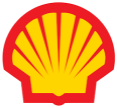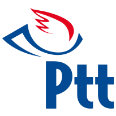
News and analysis
24-hour breaking news, market commentary and industry analysis from across the globe
Gain a clear view of your markets in real time
Capitalise on opportunity, with unbiased news coverage and expert analysis of the critical events shaping your markets. Inform your decision-making and plan with confidence, with analysis of the worldwide market dynamics impacting commodity markets and the broader industry, from our global team of over 200 pricing editors and a dedicated news team.
Stay one step ahead of your market, with mobile and email alerts for your chosen commodity and instant access to news and analysis via our customisable dashboard on ICIS Clarity™.
RELATED LINKS:
Ask ICIS
Make sense of complex commodity markets in an instant with comprehensive insights just the way you need them.
Harnessing the power of Gen AI, Ask ICIS distils the breadth and depth of ICIS news and analysis, backed by over 150 years of trusted expertise, to deliver short summaries or detailed reports in the language of your choice.
Transform reliable data into confident decisions.
Chemicals news and analysis
Confidently plan ahead, with high-value proprietary content covering over 300 commodities markets including plastics, biofuels and solvents. Gain a complete picture at a glance, with 500 standalone chemicals news stories and pricing analysis each week.
React faster to shifting markets, with news coverage of spot transactions, contract settlements, market shifts, force majeures, production issues, outages, planned disruptions and more. Twice-daily snapshots of major commodity prices in each region, plus a weekly feedstocks summary and week-ahead calendar story help you keep ahead of fast-moving commodity markets.
Understand the wider global landscape with in-depth analytical commentary covering corporate activity, new projects, financial markets, regulation and legislation, plus the environmental, trade and economic issues driving chemical industry strategy.
Chemicals news and analysis is available to all subscribers. For access to ICIS Chemical Business, we offer a subscription to Global News + ICB.
Global News + ICIS Chemical Business
(ICB)
Keep abreast of dynamic markets with unlimited access to ICIS chemicals news across all markets and regions, plus ICIS Chemical Business (ICB), the leading magazine for the chemicals industry.
Capitalise on opportunities as they happen, with a dedicated 24-hour news channel and mobile or email alerts.
Gain a deeper understanding of the chemicals landscape with ICB, the weekly online magazine offering unique insights on chemical industry strategy, plus annual features including the ICIS Innovation Awards, CEO of the Year, Top 40 Power Players, Top 100 Chemical Companies, Top 100 Chemical Distributors and Top M&A.
Learn about the trends driving chemicals markets with coverage of major trade association events such as AFPM, EPCA, APLA and Fecc, and broaden your market knowledge with two chemicals product profiles per issue, featuring an overview of uses and prices plus supply and demand, plants, capacities and outlook.
Energy news and analysis
In the transition to a low-carbon economy, stay ahead of rapidly evolving energy markets with ICIS news and analysis on natural gas, power and renewables, crude oil, LNG and hydrogen.
Trade confidently, with daily market commentary on price movements and unbiased coverage including in-depth, data-driven analysis of the trends shaping energy markets. Inform your decision-making with outlooks and insight on geopolitical events, changing fundamentals, new policies and regulation.
Topics regularly covered by our dedicated team of market reporters include the evolution of gas and LNG in the supply mix, plus regular analysis of locational spreads and how the various energy commodities are influencing one another.
ICIS news and analysis are a standard part of the subscription to your chosen commodity, in addition to benchmark price assessments and indices.
Why subscribe to ICIS News and analysis?

React quickly to opportunity
Respond to events as they happen, with instant access to news and analysis covering market-moving events including outages and force majeures.

Optimise profitability
Remain competitive and preserve margins, with coverage of market-moving events and the longer-term trends driving pricing.

Inform decision making
Benefit from an expert market view and unbiased news and analysis from reporters embedded in global commodity markets.

Minimise risk
Limit exposure and plan confidently, with a clear view of market-moving events and insight into the factors driving longer-term trends.
ICIS News
Idemitsu Kosan, Mitsubishi Corporation announce joint study on low-carbon ammonia
HOUSTON (ICIS)–Idemitsu Kosan and Mitsubishi Corporation announced they have agreed to jointly study the efficient operation of clean ammonia carriers and transshipment terminals. The companies said in a statement this effort will look at ExxonMobil’s planned low-carbon hydrogen and low-carbon ammonia production project in Baytown, Texas, as well as the offtake of ammonia. Further through this combined effort, Idemitsu and Mitsubishi Corporation intend on accelerating their study on structuring a supply chain for low-carbon ammonia which is procured from overseas. Idemitsu, which has established an ammonia import and receiving terminal at its Tokuyama Complex, said it aims to jointly introduce over 1 million short tons of ammonia as fuel and raw materials by 2030 in cooperation with other companies. For its part Mitsubishi Corporation said it is assessing the partial conversion of its Namikata terminal into an ammonia terminal. It is also preparing to build a hub terminal that will supply approximately 1 million short tons of ammonia annually to various industrial applications such as electricity, transportation and chemicals by 2030. Idemitsu and Mitsubishi Corporation said they both plan to supply the low-carbon ammonia volumes produced by this project to Japan through their receiving terminals.
23-Oct-2024
Atlas Agro, International Raw Materials announce green nitrogen offtake and marketing deal
HOUSTON (ICIS)–Fertilizer producer Atlas Agro and plant nutrient distributor International Raw Materials have announced a binding strategic offtake and partnership agreement for the green nitrogen fertilizer from Atlas Agro’s Pacific Green Fertilizer plant in Richland, Washington. The Pacific Green Fertilizer plant will be the first at-scale, low carbon fertilizer production facility in the world with it planned to produce 700,000 short tons of nitrogen fertilizer annually and serving farmers across the Pacific Northwest region. The facility will be in the Horn Rapids industrial park in Richland, Washington, and will produce green nitrogen fertilizers in liquid and solid form. Switzerland-based Atlas Agro recently completed its front-end engineering design (FEED) study for the project and received the environmental determination of non-significance from both state and federal agencies. The final investment decision (FID) is expected in early 2025. Atlas Agro’s fertilizer production process will use proven technologies and be powered by renewable energy sources with the company saying low carbon fertilizer products are essential to sustainable food production and addressing climate change. “Our partnership with IRM is a significant milestone in our progress to bring locally produced, green nitrogen fertilizer products to growers in the Pacific Northwest. IRM is a company renowned for its market knowledge and logistics capabilities with deep roots in the Pacific Northwest, and a commitment to bringing sustainable solutions to the agriculture supply chain,” said Petter Ostbo, Atlas Agro CEO. For its part International Raw Materials said adding the green fertilizer products to their marketing and distribution portfolio is well-aligned with the company’s commitment to agricultural sustainability. “We’re seeing increased demand for a variety of solutions across the supply chain as food companies respond to the needs of consumers and look for new tools to address their Scope 3 emissions,” said Tip O'Neill, International Raw Materials president.
23-Oct-2024
Mexico's Orbia lowers 2024 guidance, PVC group reports flat Q3 income
HOUSTON (ICIS)–Orbia's vinyls business reported on Wednesday that Q3 operating income was flat year on year amid lower costs for ethylene and electricity as well lower volumes and prices. The following shows the financial performance of the company's Polymer Solutions segment, which includes the Vestolit and Alphagary businesses. Figures are in millions of dollars. Q3 24 Q3 23 % Change total sales 634 677 -6% Operating income 23 23 0 EBITDA 90 86 5% Source: Orbia Orbia attributed the rise in the segment's EBITDA to lower costs as well as the company's efforts to optimize production and fixed costs. Orbia attributed the declines in volumes to challenging business conditions. COMPANY LOWERS GUIDANCEFor Orbia as a whole, the company expects to report $1.10 billion to $1.15 billion in earnings before interest, tax, depreciation and amortization (EBITDA), down from its earlier guidance of $1.30 billion. Orbia lowered its guidance because the market had not recovered as the company had expected. The company's other segments include the following: Building & Infrastructure, which includes the Wavin business. It makes pipes and fittings. Connectivity Solutions, which includes the Dura-Line business. It makes telecommunications conduit, cable-in conduit and similar products. Precision Agriculture, which includes the Netafim business. It makes irrigation systems. Fluor & Energy, which includes the Koura business. It mines fluorspar and makes fluorine derivatives. Thumbnail shows PVC pipe. Image by Shutterstock.
23-Oct-2024
PODCAST: Electric cracker furnace shows power of chemical industry innovation
LONDON (ICIS)–The overall winner of this year’s ICIS Innovation Awards – BASF, Linde and SABIC’s electrically heated steam cracker furnace – could have a massive impact on overall chemical industry emissions if the technology is widely adopted. World’s first electrically heated steam cracker at demonstration stage Cuts CO2 emissions by up to 95% compared with natural gas-fired crackers Tripartite win shows strength of partnerships Challenges include obtaining sufficient renewable energy, financing for scale up Financial risks can be reduced by converting one furnace at a time In this Think Tank podcast, Will Beacham interviews Michael Reitz, technology manager for BASF and Martin Hofstaetter, process engineer for furnace technology at Linde. Register your interest to enter the 2025 ICIS Innovation Awards. Editor’s note: This podcast is an opinion piece. The views expressed are those of the presenter and interviewees, and do not necessarily represent those of ICIS. ICIS is organising regular updates to help the industry understand current market trends. Register here . Read the latest issue of ICIS Chemical Business. Read Paul Hodges and John Richardson's ICIS blogs.
23-Oct-2024
Emerging Asian economies’ strong growth to subside amid China slowdown – IMF
SINGAPORE (ICIS)–Emerging Asian economies are expected to see strong economic growth subside, partly due to a sustained slowdown in China, the International Monetary Fund (IMF) said on Tuesday. China’s 2024 growth forecast lowered to 4.8% Downside risks dominate global outlook China property risks may trigger global impact The IMF trimmed its forecast for emerging and developing Asian economies by 0.1 percentage points to 5.3% and 5.0% for this year and 2025, respectively, slowing from the 5.7% expansion in 2023. In India, the outlook on a fiscal year basis is for GDP growth to moderate from 8.2% in 2023 to 7% in 2024 and 6.5% in 2025, “because pent-up demand accumulated during the pandemic has been exhausted, as the economy reconnects with its potential”, the IMF said. For China, the IMF downgraded its projection for this year by two-tenths of a percentage to 4.8% from its 5% estimate in July. This is lower than China’s official growth target of around 5% for this year. The IMF’s China growth forecast for 2025 was unchanged at 4.5%. However, the slowdown in China is projected to be more gradual despite persisting weakness in the real estate sector and low consumer confidence, it said, largely thanks to better-than-expected net exports. The IMF’s chief economist Pierre-Olivier Gourinchas at a press conference on Tuesday said in its latest forecasts that China’s fiscal stimulus measures so far lacked detail and therefore were not included in the China growth outlook. China’s central bank stimulus measures, unveiled last month to spur lending, “would do little to materially lift growth”, Gourinchas was quoted by news agency Reuters as saying. China's economic forecast remains bleak, despite the government’s stimulus measures announced in late September, which briefly boosted market sentiment. China on 18 October reported year-on-year GDP growth of 4.6% in the second quarter, the slowest pace since early 2023, while overall growth in the first nine months of 2024 stood at 4.8%. China’s latest measures are insufficient to address its economic woes, economists have warned, and the IMF notes that significant risks remain, particularly in the troubled property sector. “Conditions for the real estate market could worsen, with further price corrections taking place amid a contraction in sales and investment,” the IMF said. “The experiences of Japan in the 1990s and the United States in 2008 suggest that a further price correction is a plausible downside risk if the crisis is not adequately addressed.” GLOBAL REPERCUSSIONS OF CHINA’S SLOWDOWN A prolonged or severe downturn in China's property market, especially one that triggers financial instability, could dampen consumer confidence and negatively impact the global economy due to China’s significant role in international trade, the IMF warned. With China’s economy softening, global growth is expected to be a lackluster 3.1% in five years – a notch down from the pre-pandemic average, it said. Growth is projected to hold steady at 3.2% in 2024 and 2025, but some low-income and developing economies have seen sizable downside growth revisions, often tied to intensifying conflicts. The IMF’s Gourinchas in a separate blog post said that downside risks are increasing and now dominate the global economic outlook. “An escalation in regional conflicts, especially in the Middle East, could pose serious risks for commodity markets,” he said. Global output could be significantly lower than the IMF’s baseline forecast due to shifts toward undesirable trade and industrial policies, overly tight monetary policy, or an abrupt tightening of global financial conditions, Gourinchas added. Focus article by Nurluqman Suratman
23-Oct-2024
Brazil's GDP to grow 3% in 2024, Mexico's to slow down to 1.5% – IMF
LIMA (ICIS)–Brazil’s GDP is expected to grow by 3% in 2024, up sharply from prior forecasts of 2.1% growth published in July, the IMF said this week. Mexico’s growth, however, is expected to slow down to 1.5%, down sharply from the previous 2.2% forecast. For the Latin America and the Caribbean region as a whole, growth is projected at 2.1% in 2024, slightly up from the 1.9% forecast published in July, said the IMF. “[Brazil’s GDP growth forecast] is an upward revision … owing to stronger private consumption and investment in the first half of the year from a tight labor market, government transfers and smaller-than-anticipated disruptions from floods,” said the IMF. “However, with the still-restrictive monetary policy and the expected cooling of the labor market, growth is expected to moderate in 2025.” The more conservative forecast for the Mexican economy reflects weakening domestic demand on the back of monetary policy tightening, said the IMF, who projected the country’s growth would continue slowing down in 2025. The Fund expects Argentina's GDP to fall by 3.5% this year, a forecast considerably more optimistic than most economists. For detailed country-by-country figures see bottom table. INFLATION BATTLE WON – MOSTLYThe IMF celebrated how for most countries in Latin America and the Caribbean inflation rates have dropped significantly from their peaks and continue to be on a downward trend. The Washington-based body highlighted, however, how in some countries inflation is ticking up on the back of, among other factors, weather events, which can suddenly push prices for agricultural products. “Large countries in the region have experienced upward revisions since the April 2024 World Economic Outlook that reflect a mix of 1) robust wage growth preventing faster disinflation in the services sector (Brazil, Mexico); 2) weather events (Colombia); and 3) hikes in regulated electricity tariffs (Chile),” said the IMF. “[For example] Coffee prices rallied, rising by 33.8%, following weather-related supply concerns in key producers Brazil and Vietnam.” Despite adverse weather events, Brazil’s national supply corporation Conab said earlier in October that the 2024-2025 fertilizers-intensive agricultural season is set to reach a record high. Conab is forecasting grain production to reach 322.47 million tonnes in the 2024-2025 harvest, up 8.3% compared with the previous harvest. IMF forecasts (in % change) GDP growth 2023 GDP growth forecast 2024 GDP 2025 growth forecast Inflation 2023 Inflation forecast 2024 Inflation forecast 2025 Brazil 2.9 3.0 2.2 4.6 4.3 3.6 Mexico 3.2 1.5 1.3 5.5 4.7 3.8 Argentina -1.6 -3.5 5.0 133.5 229.8 62.7 Colombia 0.6 1.6 2.5 11.7 6.7 4.5 Chile 0.2 2.5 2.4 7.6 3.9 4.2 Peru -0.6 3.0 2.6 6.3 2.5 1.9 Ecuador 2.4 0.3 1.2 2.2 1.9 2.2 Venezuela 4.0 3.0 3.0 337.5 59.6 71.7 Bolivia 3.1 1.6 2.2 2.6 4.3 4.2 Paraguay 4.7 3.8 3.8 4.6 3.8 4.0 Uruguay 0.4 3.2 3.0 5.9 4.9 5.4 Latin America and the Caribbean 2.2 2.1 2.5 14.8 16.8 8.5
22-Oct-2024
US Sherwin-Williams expects choppy H1, sees signs of consumer weakness
HOUSTON (ICIS)–Sherwin-Williams expects demand during the first half of 2025 will remain choppy while the company waits for what it expects will be an inevitable inflexion point for demand for its products, the US-based paints and coatings producer said on Tuesday. "The single largest variable heading into next year is the timing and pacing of a true inflexion in the demand environment," said Heidi Petz, CEO. She made her comments during an earnings conference call. "It is only a question of when, not if." Until that inflexion comes, Sherwin-Williams expects demand will remain choppy. During the third quarter, demand from consumers undertaking do-it-yourself (DIY) improvement projects remained soft, a trend also noted by RPM International, a company that makes coatings, adhesives and sealants. Sherwin-Williams attributed the softness for its DIY products to weaken existing home sales and inflation. For auto refinish products, insurance claims have fallen because consumers are reluctant to pay deductibles to get their vehicles repaired after accidents, Petz said. PPG also noted a decline in insurance claims. Near term, Sherwin-Williams warned about the possibility that its industrial customers could undergo extend holiday shutdowns. The company did not provide more details. However, US-based paints and coatings producer PPG did note that automobile original equipment manufacturers (OEMs) started taking unscheduled and prolonged downtime in the third quarter, and the trend should continue in the fourth quarter. DEMAND FROM HURRICANE REPAIRSHurricanes initially lower demand because they shut down paint stores and customers cannot immediately return to work. Ultimately, demand does rise after customers assess damage and pursue insurance claims. After about four weeks, demand for primers increases, Sherwin-Williams said. Sundries and paint then follow. Forecasting the effects of Hurricanes Helene and Milton are difficult because they hit weeks apart in the third and fourth quarters. TALK OF RENOVATION RESURGENCELonger term, the US could see a resurgence of home renovation projects, said Jim Jaye, senior vice president of investor relations. One of the economic indicators tracked by Sherwin-Williams is the Leading Indicator of Remodeling Activity (LIRA), which is published by the Joint Center for Housing Studies of Harvard University. According to LIRA, spending for improvements and repairs on homes should expand once again by the middle of 2025. Economic growth, expected declines in inflation and higher home equity could encourage homeowners to undertake repairs and remodeling, he said. Paints and coatings are important end markets for many petrochemicals and resins. Titanium dioxide (TiO2) is used as a white pigment and to make paints opaque. Solvents used in paints and coatings include ethyl acetate (etac), butyl acetate (butac) and methyl ethyl ketone (MEK). Polyurethane coatings are made with polyols and isocyanates such as methyl diphenyl diisocyanate (MDI). Acrylic based coatings are made with methyl methacrylate (MMA), and epoxy coatings are made with epoxy resins. Other chemicals used in paints and coatings include isopropanol (IPA) and vinyl acetate monomer (VAM). Thumbnail shows paint, one of the products made by Sherwin-Williams. Image by Oleksandr Latkun/imageBROKER/Shutterstock.
22-Oct-2024
FAKUMA ’24 PODCAST: Mixture of pessimism, cautious optimism for 2025
LONDON (ICIS)–Markets Editor Stephanie Wix is joined by Senior Editor Manager Vicky Ellis, markets reporter Meeta Ramnani, and Senior Analyst Jincy Varghese, as they discuss the key trends from the 29th Fakuma plastics processing trade fair in Friedrichshafen, Germany, in this latest ICIS podcast. They explore discussion topics heard at the event last week, from the highest concerns to the lowest expectations. They also explain the clash of pessimism and optimism between markets including acrylonitrile butadiene styrene (ABS), polycarbonate (PC), polyethylene (PE) and polypropylene (PP), and also engineering plastics polyacetal (POM) and polybutylene terephthalate (PBT).
22-Oct-2024
A practical approach to energy could support EU competitiveness – GIE
EU energy policy must be less ideological in next five years, GIE conference hears Lowering high energy prices, which harm industry, a key goal for incoming Commission Commissioner confirmation hearings to take place 4-12 November MUNICH (ICIS)–The incoming European Commission must move away from ideological energy policy if it hopes to stabilize prices and keep industry competitive, delegates heard at the Gas Infrastructure Europe (GIE) conference in Munich on 17-18 October. However, despite an announced focus on a ‘clean industrial deal’, doubts remain that Europe can apply the lessons learned from the energy crisis. Speaking to ICIS on the sidelines, Tsvetelina Penkova, vice-chair of the European Parliament’s energy and industry committee said the thought the upcoming commissioner hearings would be “dynamic”, though she hoped the meetings would be constructive rather than unpleasant. Nominated commissioners must be confirmed by the European Parliament before they can take up their roles. Hearings are scheduled for 4-12 November. “The problem is quite a lot of topics are overlapping [in commissioners’ portfolios], so it’s very difficult to distinguish exactly the area of expertise,” she said, citing concerns over who would ultimately be responsible for decisions and the time involved if multiple people sign off policies. Penkova told delegates that fluctuations in energy prices between different regions harmed competitiveness and energy security. The discrepancy “really depends on the energy source that’s being used at the moment,” she said, as a lack of proper grid interconnections created bottlenecks, and without fixing this Europe’s energy landscape would remain dominated by local, regional or national solutions. The topic of surging heatwave-driven power prices experienced in central and southeastern Europe also dominated a meeting of EU energy ministers in Luxembourg on 15 October. Penkova called for energy resilience as well as a diversity of sources, including renewables, hydrogen, ammonia and other carriers, alongside storage and flexibility solutions. “We must understand that dependency only on one single sector or energy source is naive. That’s definitely not going to work,” she said. GIE president-elect Arno Bux stressed to delegates that gas infrastructure would remain vital for decades to come, citing nascent hydrogen, biomethane and carbon dioxide markets. “We all know pipelines … are by far the most efficient way to transport and store energy,” he said. But the industry was hindered by 1990s-era regulation, Bux said, which failed to foresee the need to maintain and expand infrastructure under uncertain conditions or the costs involved. NUCLEAR SCEPTICISM? Penkova dismissed concerns over nuclear skepticism previously voiced by the nominees for energy commissioner, Denmark’s Dan Jorgensen, and executive vice-president Teresa Ribera from Spain, tasked with delivering the ‘clean, just and competitive transition’. Noting that the parliament considered nuclear generation as strategic and sustainable technology, Penkova told ICIS she didn’t foresee any change in Europe’s policy, but instead hoped for better integration. “When we’re speaking of nuclear waste, we shouldn’t be looking only [at] the countries that are producing nuclear energy, but also at countries that are consuming [it], because we are all part of the waste creation,” she said. CLEAN AND INDUSTRIAL Ilaria Conti, gas expert and coordinator for strategy and development at the Florence School of Regulation, told delegates it was important the EU had not watered down its commitment to decarbonize, instead aiming to use industry as the “engine” of the transition. The shift followed the results of European parliamentary elections in June, which saw a perceived backlash against green policies. "The election results forced people to realise that achieving climate neutrality targets on time but losing the economy and the electorate along the way was unhelpful, " said Niko Bosnjak, head of policy and communication at the German grid operator OGE. Bosnjak said he worried that there was less urgency for policymakers to act since the pressure had eased, despite net-zero goals rapidly approaching. “I’m afraid we’re getting into the regular slump that we’ve been in before. I’m not saying I’m all for crises, ok? I think no one wants that, but we need to do better a better job in translating the learnings,” he said. For example, Bosnjak wondered why there was not middle ground between the 9-month construction of an LNG-import pipeline during the crisis and the return to an average of 6-8 years to build infrastructure. Conti said she thought plans to make the Commission more interdependent was “actually in my opinion a very smart move by Ursula von der Leyen.” The overlapping briefs would hopefully force incoming commissioners to cooperate, Conti said, breaking down past silos where each commissioner focused only on their own portfolio.
22-Oct-2024
INSIGHT: ‘Bridge’ countries bring new opportunities as global trade flows fragment – Bertschi
BARCELONA (ICIS)–Changing trade flows driven by increasing friction between China, the US and their allies mean there will be demand for new chemical logistics routes and infrastructure, according to the executive chairman of chemical logistics group Bertschi. As direct chemical exports from China to the US decline, and more trade barriers go up, countries in Eastern Europe, southeast Asia plus Mexico and Turkey are acting as a stopping off points for indirect exports, while new chemical manufacturing also springs up in these areas, said Hans-Jorg Bertschi. He said: “The geopolitical situation also plays an important role – there are two blocs now – western countries and the BRICs (Brazil, Russia, India, China) led by China where we see a certain fragmentation of global trade. Chemical flows between China and the US are shrinking and we also now see a lot of triangulation trade where bridge countries in between take advantage of the situation.” Speaking on the side lines of the European Petrochemical Association’s annual conference in Berlin, he explained that China now transports a lot more chemicals to Mexico, where local manufacturers add value and then export finished goods to the US. Chemical producers – some from China – are building plants and businesses in Hungary and Turkey. There is also a flurry of activity in Morocco, India and Vietnam, which are all changing trade patterns around the globe, the executive believes. He said: “The reality is that new countries are emerging, which I call bridge countries between the blocs – some do not yet have the right chemicals infrastructure so here I would expect to see more investment in chemical logistics and supply chain infrastructure where there is growing local demand in addition to demand from regional fragmentation.” OTHER CHEMICAL TRADE FLOWS ALTER Bertschi pointed out that there is a clear increase of imports from the US to Europe based on the US feedstock advantage and growth of new-build facilities which are very efficient. “This has been going on for 3-4 years and will develop further. If you look at the average cracker size in Europe it’s about 350,000 tonnes/year whereas new world scale crackers are around 1 million tonnes/year. Also the average age of Europe’s crackers is 40-50… so I expect to see more closure announcements here, and more imports from the US, the Middle East and eventually from China.” CHEMICAL RECYCLING WILL DRIVE NEW LOGISTICS The chemical recycling sector is growing, with 83 projects in Europe alone recorded in the ICIS Recycling Supply Tracker – Chemical. Globally the database records 173 sites and this nascent part of the chemical industry will create some completely new logistics requirements and trade flows according to Bertschi. He pointed out that the current linear model for chemical production just requires oil and gas to move mainly by pipeline to refinery and cracker sites. The finished products – chemicals and polymers – are then distributed to downstream customers. The circular economy creates new flows of material which will require logistics support: “But now, with renewables, we have new flows of product which will require inbound logistics to deliver feedstocks into these plants. Pyrolysis oil will then be produced across regions which will require complex inbound logistics to refineries.” Bertschi has started placing storage centers near to crackers, plus heating and testing facilities for pyrolysis oil, which is a product of chemical recycling which can be used as a circular feedstock for chemical production. “This is not homogenous – it needs to be analysed before it is put into a cracker. Previously just a pipe was needed but now complex inbound logistics will be required. We will import pyrolysis oil from across Europe and the US and some of this is already happening – this is at the beginning but it is becoming one of our growth drivers.” Interview by Will Beacham Image credit: Georgios Tsichlis/Shutterstock
22-Oct-2024
Contact us
Partnering with ICIS unlocks a vision of a future you can trust and achieve. We leverage our unrivalled network of industry experts to deliver a comprehensive market view based on trusted data, insight and analytics, supporting our partners as they transact today and plan for tomorrow.









